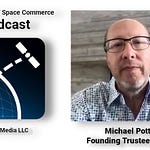If you've got a few years in your wake, you probably remember when the phrase "via satellite" was indicative of the highest level of communications technology. But these days, chances are if you're communicating, somewhere along the line there is a satellite involved.
"A phased array is a technology that's been around for a long, long time." Shey Sabripour, CesiumAstro
On this edition of The Ex Terra Podcast, Tom Patton talks with Shey Sabripour, founder of CesiumAstro. The company recently announced its “Element” integrated phased-array satellite.
"A phased array is a technology that's been around for a long, long time. It was conceptualized a little over 100 years ago. It is a device that allows you to electronically steer ... beams. The antenna can remain stationary and fixed, but the beams electronically, without any moving parts, track the satellite."
CesiumAstro offers a suite of scalable products from discrete modules to complete software-defined payloads that work out of the box. The integrated product line ranges from single-beam downlink solutions to multi-beam, full-duplex communications payloads.
As CEO, Shey leverages 30 years of leadership in the design, development, and launch of low-Earth orbit (LEO) and geosynchronous orbit (GEO) telecommunication satellites, launch vehicles, and other interplanetary space vehicles.
Headquartered in Austin, Texas, with additional locations in the U.S. and U.K., CesiumAstro has grown from a handful of employees in January 2017 to more than 250 employees today. The company serves national security programs, as well as commercial customers.













